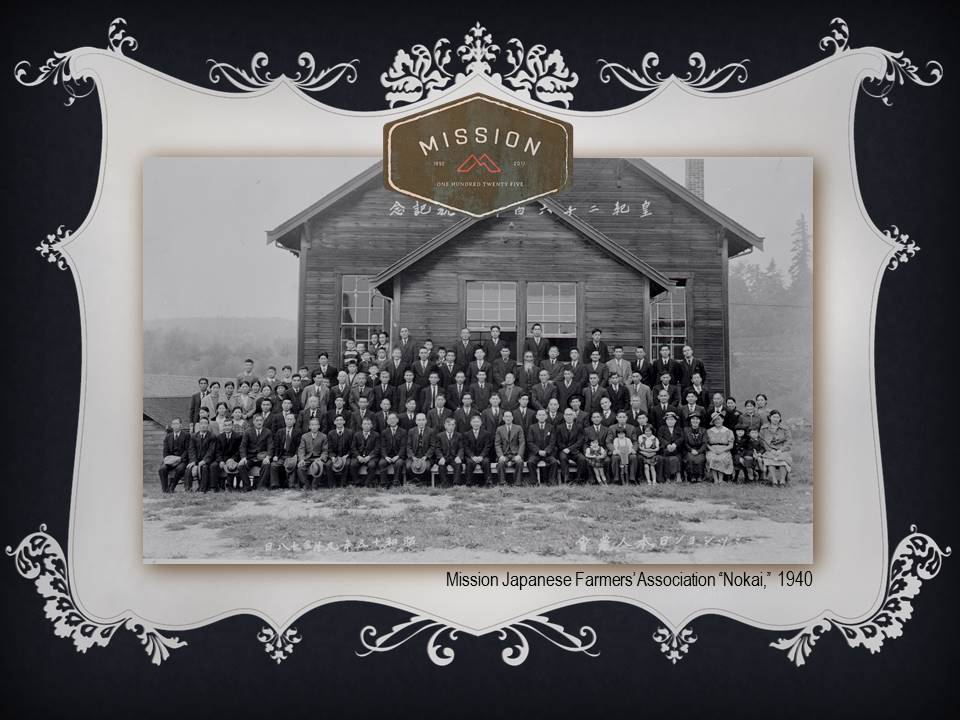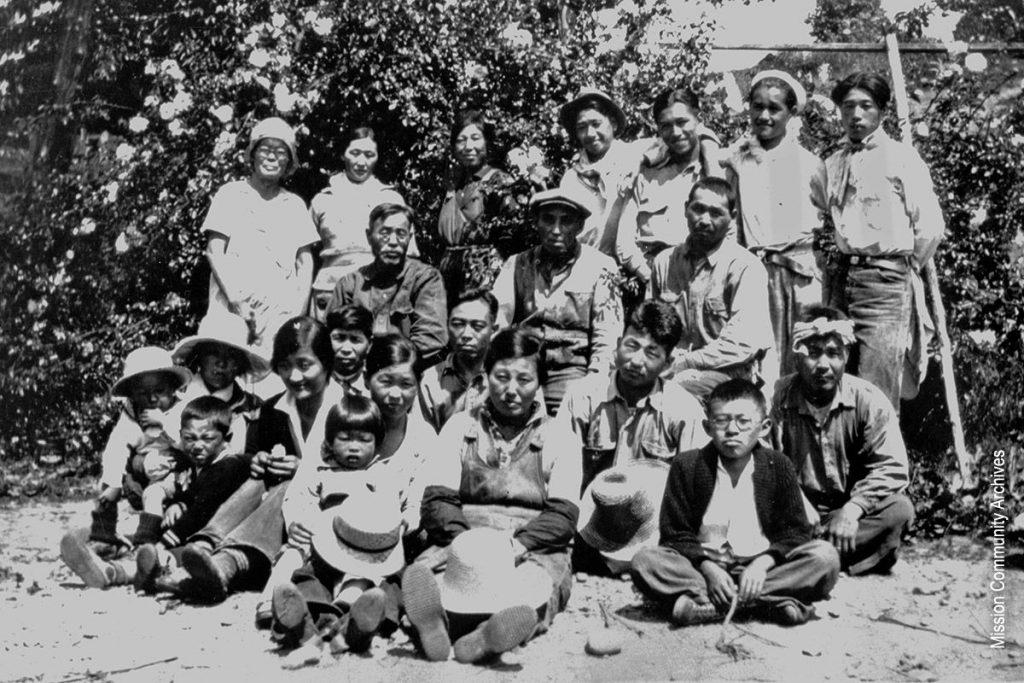
As the Japanese farming community grew, there was a need for a central organization where they could congregate, socialize, exchange views and discuss ways and means of improving their welfare.
By December of 1915, there were 22 farmers from Japan living in Mission, who either owned or leased land. In 1915, 15 of these farmers, led by Kumekichi Fujino, Tashiro Hashzume, Minoru Kudo and Teizo Nakashima, formed the Kyoreikai or “Mutual Encouragement Association,” as a collective association to address their collective needs. The first executives were: Pres. Kumekichi Fujino, V.P. Minoru Kudo, Sec. Teizo Nakashima, and Sec. Sensuke Tanaka. At a regular meeting in February 1917, the Kyoreikai resolved to change its name to the “Mission Japanese Farmer’s Association”, or the “Mission Japanese Nohkai.” The executives at this time were Pres. Minoru Kudo, V.P. Kumekichi Fujino, Sec/Tres. Teizo Nakashima.
By February 2, 1919, there were a total of 44 Nohkai members. The objective of the Nohkai was to market strawberries and other farm produce as a cooperative group, jointly purchase fertilizers at discounted prices, seek uniformity in the marketing of farm products, maintain social ties, and enhance the wellbeing of their members. In addition, the Nohkai organised social activities to contribute to their members’ welfare and sense of community. Another goal of the group was to maintain harmony and enhance relationships with the white community. If there were any problems or disputes that occurred, they were promptly investigated by the Nohkai, and resolved to the satisfaction of both sides.

Fujino farm workers pose for picture.